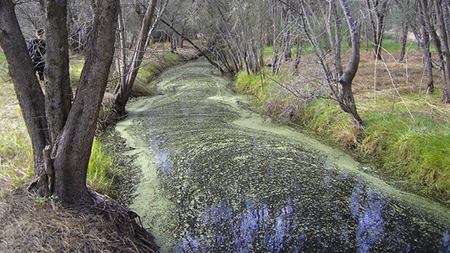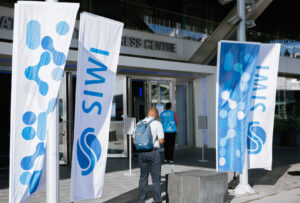Let’s talk about solutions
Blog from Gordon research seminar and conference, the United States
If I had to give one sentence long description to the Gordon Research Catchment Science Conference, it would be this. This was a unique opportunity to meet leading scientists, and try to identify collaborative ways to address pressing environmental issues. Each field holds useful information for the others, and best results will be reached if we increase our collaboration.
The conference was a blend of experimentalists and modelers, different institutes and organizations, different study fields and different study sites and methods. The sessions included talks, poster presentations, and open discussions.
The topic was ‘Thresholds in time and Space’. The questions addressed were from hydrology, ecology, limnology, geochemistry, hydrogeology, flood management, and decision making.
During the open discussions the participants shared questions that are crucial in their research fields. For example, the limnologists are interested to know the nutrient and trace element fluxes from the catchment to the lakes; the forest management specialists are interested in the weathering rates and the nutrient transport; the biogeochemists are interested to know the active flowpaths and the velocity of water in the soil to study Nitrogen and Phosphorus transport rates. Hydrological observations and modeling hold partly the answers to these questions.
Although it is challenging to describe the hydrology of a catchment in all the possible detail, from small to large scale, it is of great value to know what the questions of other catchment scientists are, so that we can put effort in answering those questions.
As a more specific example, one of the most striking topics that came up several times during the meeting was the algal blooms in the freshwater lakes. There is a great effort put into identifying the threshold where a bloom can occur, and the major components that contribute to the initiation of the blooms. To know these components, one needs to know in detail the origin and the quality of water that is leaching in the lakes; for example we need to know if the water ending up in the lake originates in the cultivated lands, and also how much time it spends in the soil. Accordingly, we can propose adopting measures regarding the drainage system structures and the fertilizers usage.
Another example is the commercial forestry. The rate of forest production strongly depends on the nutrients available in the soil. While the nutrient availability depends on weathering, which is regulated by the shallow groundwater flow rates. Predicting correctly the residence time of the groundwater becomes crucial, if we consider that the weathering rates vary orders of magnitude for different mean residence times.
The question of modeled and measured average residence times and the implications on weathering rates was addressed in our poster. We questioned the measurements and models reliability, and why would we choose on over the other, and identified the role of turnover time in the forest growth.
During the poster sessions I had interesting discussions both on our measuring methods and modeling approaches (we used are the ForSAFE and Vertical Equilibrium Model). For example, we discussed about the reliability of Time Domain Refrectometry and the possibilities of data correction.






